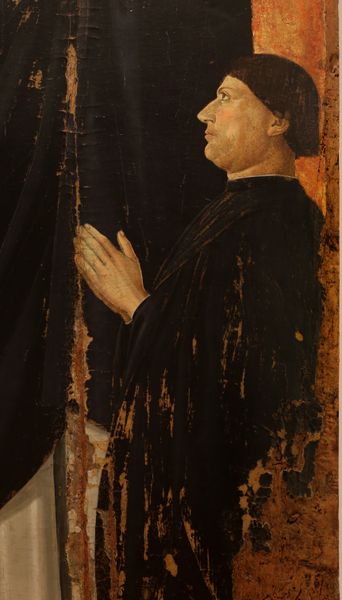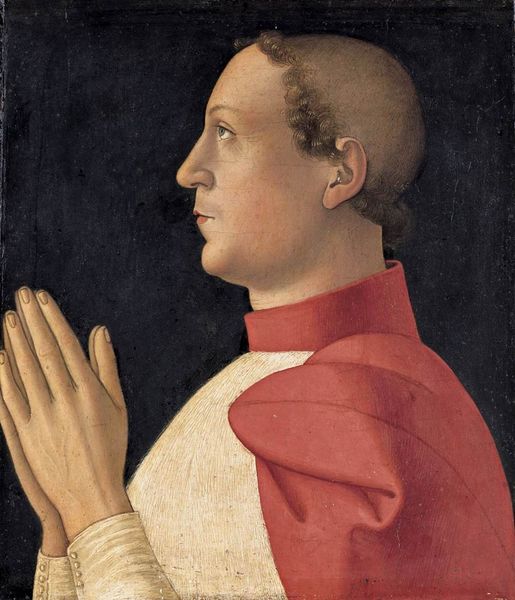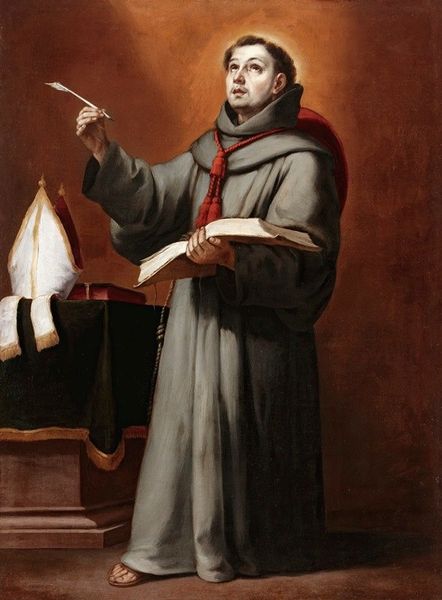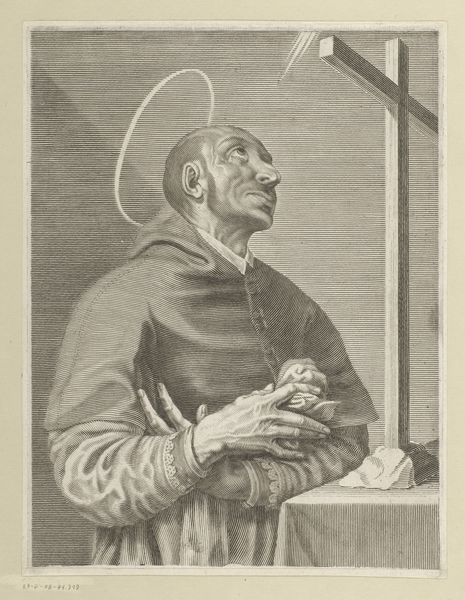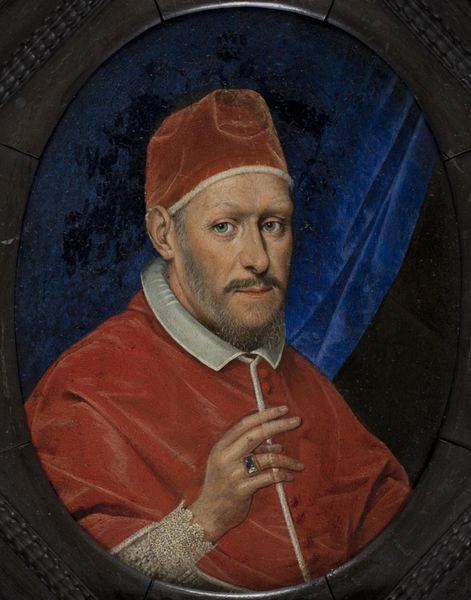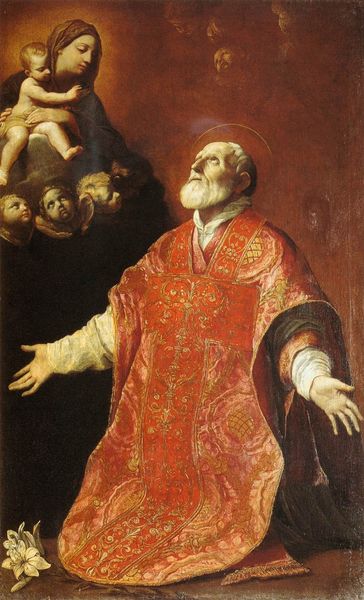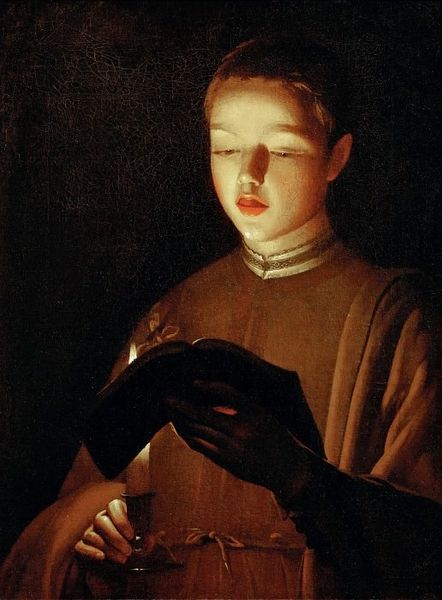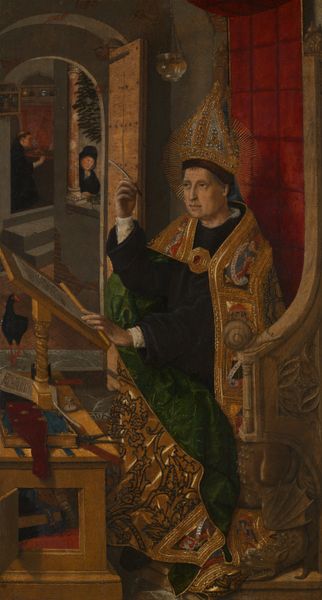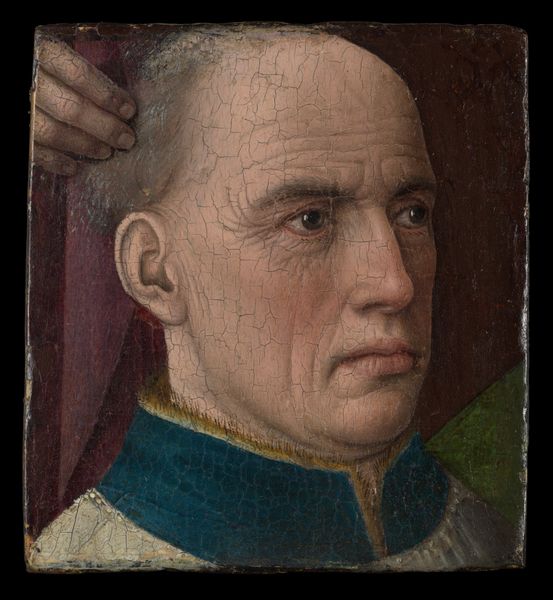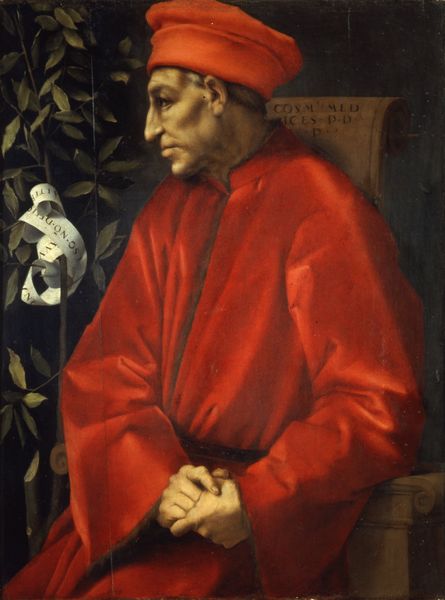
Dimensions: support height 66.7 cm, support width 81.7 cm, support thickness 3.6 cm, outer size depth 10 cm
Copyright: Rijks Museum: Open Domain
Editor: Hendrick Bloemaert's 1671 oil painting, "Portrait of Joannes Putkamer (1600-1671) on his Deathbed", is incredibly moving. It's stark, but there’s a strange dignity to it. What strikes you most about this portrait? Curator: For me, it's the way the painting highlights the public performance of grief and remembrance in the 17th century. Death, particularly for someone of Putkamer's presumed status, was not a private affair. Displaying it in a painting served to commemorate his life for family, associates, even the broader community. Note how his clerical attire and serene posture reinforces his pious identity. Who was this painting intended for? Editor: Probably his family or church? I can see them commissioning this for posterity. But how common was it to memorialize someone this way, in such a realistic style? Curator: Precisely. While deathbed portraits weren't uncommon, the realistic depiction speaks to shifting social attitudes. Consider the emerging influence of scientific observation during the Baroque era. Does this influence how death was represented? There's also the question of religious identity—how the Reformation shaped individual’s and family's relationship with art. This also gives us an indication as to who might collect, commission or be granted permission to view artworks. The Putkamers may have chosen this to portray a Protestant idea of 'good death'. What does that mean to you when viewing this work? Editor: It almost feels like an act of defiance against the opulence sometimes found in Catholic art of the time? Maybe focusing on the individual's faith in a simple, direct manner? Curator: An interesting thought. In conclusion, the painting serves not just as a likeness but also as a cultural document, revealing much about 17th-century society’s attitude toward mortality, remembrance, and the role of art within it. Editor: This has provided a broader perspective of art history as part of religious expression. Thanks.
Comments
No comments
Be the first to comment and join the conversation on the ultimate creative platform.
